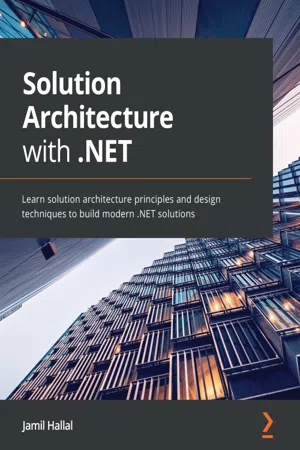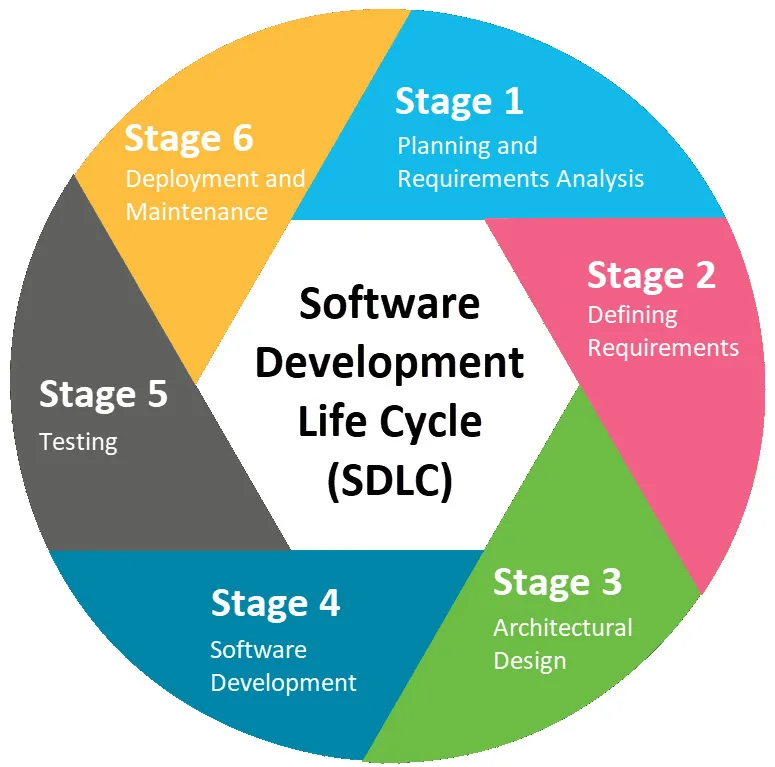
- 238 pages
- English
- ePUB (mobile friendly)
- Available on iOS & Android
Solution Architecture with .NET
About this book
Learn about the responsibilities of a.NET solution architect and explore solution architecture principles, DevOps solutions, and design techniques and standards with hands-on examples of design patternsKey Features• Find out what are the essential personality traits and responsibilities of a solution architect• Become well-versed with architecture principles and modern design patterns with hands-on examples• Design modern web solutions and make the most of Azure DevOps to automate your development life cycleBook DescriptionUnderstanding solution architecture is a must to build and integrate robust systems to meet your client's needs. This makes it crucial for a professional.NET software engineer to learn the key skills of a.NET solution architect to create a unique digital journey and build solutions for a wide range of industries, from strategy and design to implementation. With this handbook, developers working with the.NET technology will be able to put their knowledge to work.The book takes a hands-on approach to help you become an effective solution architect. You'll start by learning the principles of the software development life cycle (SDLC), the roles and responsibilities of a.NET solution architect, and what makes a great.NET solution architect. As you make progress through the chapters, you'll understand the principles of solution architecture and how to design a solution, and explore designing layers and microservices. You'll complete your learning journey by uncovering modern design patterns and techniques for designing and building digital solutions.By the end of this book, you'll have learned how to architect your modern web solutions with ASP.NET Core and Microsoft Azure and be ready to automate your development life cycle with Azure DevOps.What you will learn• Understand the role and core responsibilities of a.NET solution architect• Study popular UML (Unified Modeling Language) diagrams for solution architecture• Work with modern design patterns with the help of hands-on examples• Become familiar with microservices and designing layers• Discover how to design modern web solutions• Automate your development life cycle with Azure DevOpsWho this book is forThis book is for intermediate and advanced.NET developers and software engineers who want to advance their careers and expand their knowledge of solution architecture and design principles. Beginner or intermediate-level solution architects looking for tips and tricks to build large-scale.NET solutions will find this book useful.
Frequently asked questions
- Essential is ideal for learners and professionals who enjoy exploring a wide range of subjects. Access the Essential Library with 800,000+ trusted titles and best-sellers across business, personal growth, and the humanities. Includes unlimited reading time and Standard Read Aloud voice.
- Complete: Perfect for advanced learners and researchers needing full, unrestricted access. Unlock 1.4M+ books across hundreds of subjects, including academic and specialized titles. The Complete Plan also includes advanced features like Premium Read Aloud and Research Assistant.
Please note we cannot support devices running on iOS 13 and Android 7 or earlier. Learn more about using the app.
Information
Section 1: Understanding the Responsibilities of a Solution Architect
- Chapter 1, Principles of the Software Development Life Cycle
- Chapter 2, Team Roles and Responsibilities
- Chapter 3, What Makes an Effective Solution Architect?
Chapter 1: Principles of the Software Development Life Cycle
- Understanding what the SDLC is
- Exploring the different SDLC stages
- Getting familiar with the popular SDLC models
Understanding the software development life cycle

Exploring the different SDLC stages
- Lower costs
- Improved overall quality
- Shortened production time
- Excellent customer satisfaction
Planning and requirement analysis
Table of contents
- Solution Architecture with .NET
- Contributors
- Preface
- Section 1: Understanding the Responsibilities of a Solution Architect
- Chapter 1: Principles of the Software Development Life Cycle
- Chapter 2: Team Roles and Responsibilities
- Chapter 3: What Makes an Effective Solution Architect?
- Section 2: Designing a Solution Architecture
- Chapter 4: Designing a Solution Architecture
- Chapter 5: Exploring Architecture Design Patterns
- Chapter 6: Architecture Considerations
- Chapter 7: Securing ASP.NET Web Applications
- Chapter 8: Testing in Solution Architecture
- Section 3: Architecting Modern Web Solutions with DevOps Solutions
- Chapter 9: Architecting Modern Web Solutions with ASP.NET Core and Azure
- Chapter 10: Designing and Implementing Microsoft DevOps Solutions
- Other Books You May Enjoy